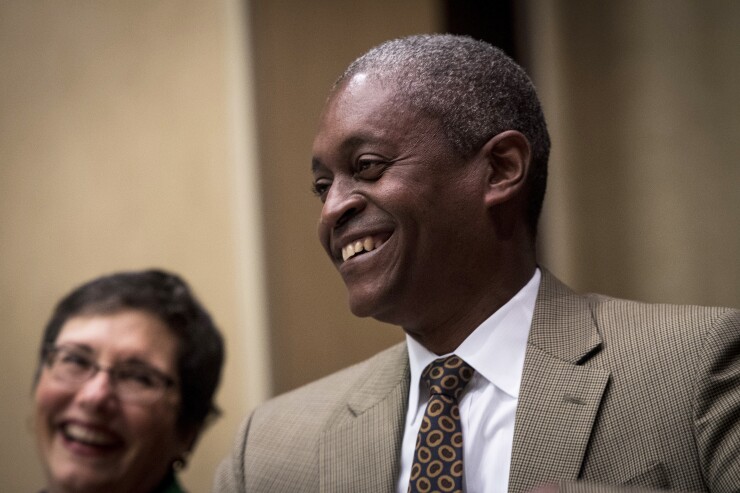Based on labor and inflation data being at or near “sustainable” levels, Federal Reserve Bank of Atlanta President Raphael Bostic said Friday he supported the Fed’s recent rate hike and would vote for others this year, even though inflation in the next several years could potentially surpass 2%.

“With the economy operating near its potential and inflation finally approaching the long-run target, it is appropriate, in my opinion, for monetary policy to be moving toward a more neutral stance,” Bostic told the Knoxville Economics Forum, according to prepared text released by the Fed.
Although it’s “hard to pin down,” he estimated the neutral rate is in a range from 2.25% to 2.75%. With Wednesday’s rate hike, the federal funds rate range is 1.5% to 1.75%.
“If the economy evolves roughly as I suspect, I will likely support further increases over the course of the year,” added Bostic, an FOMC voter this year.
One reason to go slow on rate hikes, Bostic said, is balance-sheet reduction. With the amount of rolloff increasing to $50 billion a month by yearend, he said, “I expect the interest-rate effects of our balance sheet policy to be small. But that is a conjecture. It may be prudent to act somewhat less aggressively than we might do otherwise as we accumulate information about the effects of the balance-sheet side of the current policy mix.”
Another reason, to be cautious, he noted, “forecasts are inherently uncertain. It is generally appropriate, in my view, to steadily ease our way to higher rates, moving gradually and assessing the emerging circumstances before taking another step along the path to full normalization.”
Among the risks he cited, fiscal policy may boost the economy more than expected, “representing an upside risk to my GDP growth forecast. I hasten to add, however, that the prospects of any significant or pervasive tariffs—and the reactions from trading partners that could follow—represent a counterbalancing downside risk.”
The labor market isn’t “overheated,” and nonwage expenses aren’t pressuring businesses. With an average 200,000 jobs created a month for the past two years, “well above the pace consistent in the longer run with a stable, and not falling, unemployment rate,” Bostic added, “there is an upside risk for explicit and implicit labor costs going forward.”
Bostic said he expects “this relatively calm inflation environment will persist. However, with upside risks to GDP growth and employment, I do believe the risk to the inflation outlook is also to the upside.
“In fact, my baseline forecast for the economy does contemplate some modest upward pressures on inflation over the next several years,” he continued. “For the first time in a long time, I see the potential for inflation to run somewhat above the Fed’s longer-run 2 percent target as opposed to the below-target rate we have seen over the past six years.”





